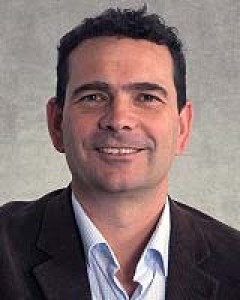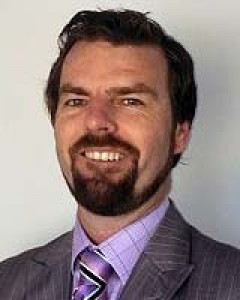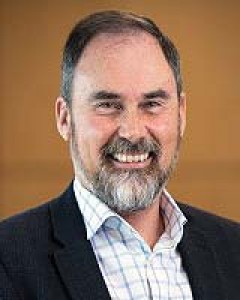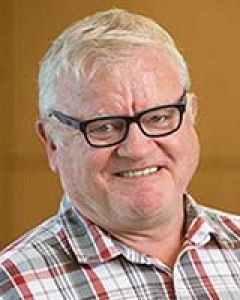Introduction
A global reality is that rural health services, and the workforces that provide those services, are under unprecedented pressure. The maldistribution of primary care and tertiary health services and workforce often compounds existing health inequalities between rural and urban areas1. Poor health outcomes in rural areas have been repeatedly and directly linked to poor access to appropriately skilled health services along with poor uptake of services that do exist2,3.
Recruitment and retention of health professionals to rural and remote areas are challenges in Australia and globally. Over the years our understanding of factors that best supply, nurture and sustain a rural health workforce has improved. These factors include financial and economic considerations (such as remuneration and other benefits), professional and organisational issues (including professional development opportunities, workload and infrastructure), social factors (including employment and educational opportunities for other family members) and the characteristics of the local community itself4.
Many programs and policies have been implemented in order to meet and overcome these challenges4. Although the health workforce’s satisfaction may be headlined under work–life balance5 and professional factors, including a rewarding career6, it is clear that a combination of approaches is needed to create a workforce environment that can address these and other needs in rural and remote areas. There is no panacea. It will take strategic planning3 with bottom-up approaches (eg understanding specific health needs in a rural community), top-down approaches (eg regulatory frameworks around rural health professionals’ working conditions), person-centred thinking (eg supporting spousal employment) as well as community-centred thinking.
Our observation of the rural health workforce sector in New South Wales (NSW), Australia is that organisations employing the rural health workforce today face health system policies and processes that lead to greater competition amongst health service providers, which in turn can lead to siloing, fragmentation and eventually less personalised or supportive health workforce approaches. Recent natural disaster and emergency events such as drought, bushfires and COVID-19 have exacerbated these issues. In this article we present a call to action, to focus on the whole-of-person and whole-of-community to attract, recruit and sustain a rural health workforce. We hypothesise that if we pursue supporting the capability of the rural health workforce then we will improve the attraction, retention and sustainability of rural health services.
The NSW Rural Doctors Network (RDN) is a 30-year-old, not-for-profit organisation designated as the Rural Workforce Agency for health in NSW by the Australian Government. RDN’s purpose is to improve health access for Australians living in remote, rural, regional, Aboriginal and disadvantaged communities. To achieve this, RDN is responsible for supporting the attraction, recruitment and retention of a sustainable healthcare workforce. RDN believes that whole-of-person recruitment and retention are fundamental to success in rural health practice.
We believe the concept of rural health workforce capability might be helpful in further supporting efforts toward rural health professional attraction, recruitment and retention. Yet, capability of the rural health workforce has not been fully defined, explored or supported – and we hypothesise that further exploring what it means to be a ‘capable’ rural health professional and what processes or conditions support or erode capability may additionally bolster efforts toward strong rural and remote health systems. We hypothesise that using the word capability may assist us all in thinking about a more systemic, integrated effort to supporting rural health professionals and the system overall.
What is capability?
Capacity refers to sufficient quantities to meet demand. Competence is what individuals know or are able to do in terms of knowledge, skills and attitude. Capability refers to skills and experience and takes into account factors such as values, commitment, creativity, intuition, integrity and other personal qualities, as well as context/environment7. It considers the extent to which individuals can adapt to change, generate new knowledge and continue to improve their performance8. Stephenson and Cairns describe capability as requiring the integration of skills, knowledge, ethics and judgement, including in dealing with unfamiliar problems in unfamiliar contexts9. Capability needs to be thought of as a dynamic performance. It changes with context and time. This is in contrast to competence, which is typically static (ie the individual has the skills to perform). Capability bridges the external (observable actions/skills) as well as the internal (not readily observable, eg values, motivation, wellbeing). While definitions of competence do include the internal, such as ‘attitude’, one might say that capability extends further or even focuses primarily on these ‘internal’, and less measured, domains. We recognise the varied interpretations of the term competence in general use in health and medicine and we propose that when a discussion of competence varying by context emerges that this is actually becoming capability. It may assist us all to be clearer in our use of these terms. Further, we posit that competence is the responsibility of the practitioner (and their education) but capability is the responsibility of the practitioner, community and system. Beyond the two commonly used c’s (capacity and competence) we believe increased focus should be placed on the capability of the rural health workforce (which thus creates the three c’s).
The Capability Approach is an economic theory developed by Amartya Sen10 that inspired the founding of the UN’s Human Development Index (capturing capabilities in health, education and income). Sen was awarded the Nobel Memorial Prize in Economic Sciences in 1998 for this work. The Capability Approach describes the quality of life (or wellbeing) that individuals are able to achieve. According to Sen, to assess wellbeing we should measure the abilities to achieve those ‘beings and doings’ that people have reason to value in life11. That is, we need to take into account what people are free to do, as well as what they actually do. Sen proposed that metrics of wellbeing should focus directly on ‘what people can do or be’. These valued ‘beings and doings’ can be basic, such as being healthy and living in a decent house, to more complex, such as being respected and feeling in control12.
Sen’s Capability Approach is being applied in different ways, and researchers have different interpretations of what it means to employ a capability perspective. Beyond its best known use informing the UN’s Human Development Index, the concept has been drawn out in the social science literature in areas of resource management and sustainability13, health 14-16, in work–family balance 17, in social welfare, poverty and disability 18 and in the resilience and emergency preparedness literature19,20. Findings from this work may have important applications in relation to health interventions.
Much of the literature on a Capability Approach has been applied to individual decision making and focuses on the abilities of each individual in light of their internal endowments and skills. Other researchers recognise the importance of the environment, including the structures and systems in defining the space in which actions and capabilities are enacted and evaluated15,16,21. These authors have focused on the social and structural forces that contribute to convert individual capabilities into realised functioning’s22 and the set of situations or conditions in the community and society that enable optimal health16.
Likewise, in the rural health workforce context, while policies and programs to improve recruitment and retention often focus on the individual health professional (and their families), thinking about capability enables us to see the family, interpersonal, leadership and organisational environment as equally important to health workforce sustainability and quality of care in rural settings. A focus on the social and structural elements of capability assists us in taking a broader view of workforce performance in the rural setting, which encompasses functioning and the freedom to pursue different functioning combinations such as enjoying a rural lifestyle, finding work–life balance and engaging with community. The feasible freedom and opportunities are paramount to the concept of capability. Even if an individual (or organisation or system) doesn’t take up those freedoms or opportunities it is the knowledge that they are available that influences capability.
The Capability Approach mirrors existing knowledge and theories of health and wellbeing. Capability aligns to the WHO definition of health: ‘a state of complete physical, mental and social well-being and not merely the absence of disease or infirmity (1946, p. 100)23.’ Capability also aligns with the Aboriginal definition of health, which includes ‘the emotional, social and spiritual/cultural well-being of the whole community in which each individual is able to achieve their full potential as a human being and thereby bring about total well-being to their community’24.
Capability may also be seen in Japanese ikigai, ‘a reason for being’ that encompasses passion, loves, mission, vocation and profession in summarising what makes up a happy, meaningful life25. Other well-known theories also dovetail the concept of capability: socioecological theories, Maslow’s hierarchy of needs, Bandura’s self-efficacy theory, Herzberg's theory of motivation, Nussbaum’s list of central capabilities and so on.
Why does capability matter?
Capability puts a person’s entire state at the centre of thinking (person-centred). Capability enables a person to work effectively in varying and unfamiliar contexts8. This is needed in rural settings. Being capable can help an individual be adaptable, feel motivated and thus have resilience to stay through ‘tough times’. Even massive problems that cannot be fully solved can be moved forward and a capable healthcare professional can problem-solve to achieve some positive outcomes8. Another example of how capability matters might be the role of shared values in teams supporting motivation and resilience. There are many more ways that capability matters in health and health care.
Using the concept of capability for action
While acknowledging the likely continued reality of poorly resourced rural health services, could a coalesced paradigm focused on workforce capability assist us? Might the Capability Approach expand thinking, leading to broader data gathering and new evidence? Could the Capability Approach assist in our understanding of rural workforce issues, improve policies and programming to ultimately improve the attraction, recruitment and sustainability of a quality rural health workforce? Could capability as a frame be a suitable home for concepts we already know much about, such as lifelong learning, reflective practice and professionalism, as well as creating the home for new concepts and emphases that may specifically support health workforce sustainability?
One of the main critiques of Sens’ theory of capability is that he doesn’t provide a specific set of capabilities, but rather a general framework. Sen argues that an exact list and weights would be too difficult to define11,26. For one, this requires specifying the context of use of capabilities, which could vary. In line with Sen’s argument, Law and Widdows suggest health not as a single ‘functioning’ but as capability constructed from various possible functionings; in other words, as a collection of valuable components that can be constructed in a variety of ways14. Thus, choices about capability, and about the actual set of functionings, need to be made in different contexts and by different individuals and groups according to the values and priorities of that context. Likewise, we consider that the basket of health workforce capabilities could change depending on the context such as the rural location, the group of people located rurally (such as Aboriginal and Torres Strait Islander people) and particular workforce challenges. Sen’s work is a theory, and further steps are needed to operationalise or implement this theory and framework. For instance, further consideration needs to be given to identifying these capabilities and how they can and should be prioritised and cultivated in these different rural healthcare contexts, and to methods for assessing the relevant capabilities. Alkire27 and Crocker and Robeyns28 propose that if the Capability Approach is to focus on what people value, participatory methods are needed to reveal people's aspirations and their freedom to achieve them.
Despite the notion that capability will be different for different people and in different contexts, we hypothesise that a number of elements make up capability for the rural health workforce. Their combination and weighting may differ by individual, town, system or may differ depending on career and life stage (context). They may be driven by the individuals themselves; however, we envision it will be possible to better understand capabilities and then support developing these wide-ranging capabilities and work on advancing indicators relevant to the rural context at practitioner, community and system levels.
Capabilities relevant to the rural health context will be expansive; however, they will likely include the more general list of central capabilities derived by Nussbaum29 as well as others, or provide more detail to the base list of central capabilities. Nussbaum’s list of 10 fundamental capabilities is motivated by a concept of human dignity, which she links to flourishing (in contrast to Sen’s emphasis on freedom)29. Several others have commenced work that contributes to an understanding of essential capabilities. For instance, Ruger15 has developed a health capability profile to analyse the impact of individual interventions and social policies by explicitly measuring categories of individual health functioning, health agency, and the more general social factors that interact to enhance or inhibit health capability. Alkire27 describes different processes for identifying capabilities, which will be relevant in different contexts and purposes of study. Although keen not to overspecify personal capabilities, Entwistle and Watt30 provide a few illustrative suggestions of capabilities that may resonate in terms of the rural healthcare professional, such as shared decision-making, respect, autonomy, self-awareness and capabilities to participate socially in a group or community.
We look forward to further exploring these elements but from RDN’s medical and health workforce needs assessment data we hypothesise that capabilities in the rural primary health context may include:
- clinical competence and confidence
- valued continuing professional development options
- wellbeing – emotional, physical, ‘spiritual’ and cultural
- family wellbeing and stability
- social connectedness
- financial stability and security
- working on a purpose that matters to the individual
- healthy and effective workplaces
- a healthy environment (eg ability to adapt and reduce pressures from environmental impacts such as drought)
- positive workplace relationships (particularly with manager(s).
The findings of a Western NSW workforce partnership project indicated that rural workforce capabilities may also include the ability to adopt innovative models of health, form partnerships and integrate services, form relationships with community, use technology, demonstrate leadership, exhibit flexibility and adaptability in health workforce roles, display autonomy and be culturally sensitive.
We hypothesise it may be useful to reflect upon capability in terms of realist thinking29, as described in Pawson and Tilley’s evaluation approach31. Realist thinking encapsulates looking at problems in terms of the desired outcome, the context in which participants are operating and unpacking the mechanism that can produce outcomes for participants in context. If the outcomes we are trying to achieve are rural health workforce attraction, recruitment, retention, quality – and there are various contexts (eg by health worker cadre, health needs of community, needs of the health professional) – then possibly capability is the mechanism between the context and the outcomes in Pawson and Tilley’s classic CMO (context/mechanism/outcome) configuration. We further hypothesise that focusing on capability, which modulates the relation between the contextual factors and outcomes, may provide us with greater understanding and avenues for action when we aim to improve outcomes. Different people may achieve equally capable results in comparable contexts and time but through different mechanisms – bringing different capabilities (skills and abilities). If mechanisms are better understood (for instance, what capabilities exist) then contexts (policies, programs, environments) may be potentially modified to improve outcomes of interest.
Supporting the development of capabilities
Before we consider how to build capability, it is important to acknowledge the inherent capabilities in individuals and groups that are available to draw on. Sen’s notion of capability posits that an individual’s capability possibilities reflect their ability to utilise a personal set of functionings and that this will be determined by a mix of personal, environmental and institutional factors32. As agents they have more or less freedom and power to exercise their agency to utilise the set of functionings: ‘Agency freedom is freedom to achieve whatever the person, as a responsible agent, decides he or she should achieve’ (p. 204)33. Further work needs to be undertaken to fully understand the impact of Aboriginal and Torres Strait Islander people’s connection to their homeland or country on their capabilities, achievement of functionings, and wellbeing and health34.
Just as Sen refers to agency, which includes the ability to achieve health goals and to act as agents of our own health, in the Australian rural health context Bourke et al emphasise the importance of power to redress rural and remote health inequities at all levels35. Power is the capacity of an individual to influence the behaviour of others36. Power, like agency, is entrenched in the actions and interactions of individuals and groups, and reflected in structural constraints (such as funding, inequities, social determinants) and enabling processes (such as new models of, or funding for, rural and remote health initiatives). Power is a particularly relevant concept to capability because it explains why rural health is heterogeneous in different locations and how change is achieved or restricted. Furthermore, it calls for the simultaneous actions of rural residents and health professionals, communities and health services as well as changes in broader health systems and social structures. Perhaps notions of functioning and agency that comprise a Capability Approach and the notion of power provide the vehicle for harnessing inherent workforce capabilities for addressing challenges surrounding the attraction and retention of health workers. This notion of inherent capability could also help to reframe the predominant ‘deficit’ view of working in the bush as outlined by Bourke et37 and Wakerman and Humphreys38. This includes promoting the fact that many doctors, nurses and allied health professionals experience professional satisfaction with rural and remote practice38.
Despite the individuals’ capabilities that exist, Bitar and Hafsi suggest that, for a capability perspective to become valuable to practitioners, we need to go beyond the present conversation around capabilities, which is mostly about the links between capabilities and performance, and try to describe better what capabilities are and how they can be developed: ‘Capabilities as ingredients of competitive advantage require managers at all levels to be involved in shaping and developing them’ (p. 412)39. With regard to a health practitioners’ personal growth, capability is enhanced by receiving feedback on performance, being challenged by unfamiliar contexts and using storytelling and small-group, problem-based learning: ‘Education for capability must focus on process (supporting learners to construct their own learning goals, receive feedback, reflect, and consolidate) and avoid goals with rigid and prescriptive content’(p. 799)8. Specific learning methods that build capability include informal and unplanned learning such as experiential learning (eg shadowing), networking, sharing with peers and direct feedback via the real outcomes of actions. Other methods that build capability include self-directed learning (mentoring, learning groups, modular courses with high choice and variety), nonlinear learning (case-based discussions (rounds, case presentations, significant event audit)), simulations, role-playing, problem-based learning and team-building8.
All of this is standard in larger, urban hospitals but isolation of rural and particularly remote health professionals often prevents them accessing such methods. E-learning can always help support, but is likely just one part of the story. Connection with others is what really needs to be addressed. Time for continuing professional development is rare, especially in rural settings; we need true implementation of policies protecting time for continuing professional development including those activities that build capabilities. Building capability means engaging in the ‘wicked’ problems and supporting the growth of self-efficacy and self-awareness rather than discipline-based tight curricula in a lecture or hotel conference room. In the research literature, professionals spoke of their capability growing by taking on increasingly complex roles step-by-step, as a calculated ‘bold step’. Few health professionals will thrive, for instance, by being ‘thrown in at the deep end’ as a way to build their capability. Currently, the ‘deep end’ may be some rural health practice settings.
Conclusion
Capability has philosophical and theoretical underpinnings that are important to understand because this concept is not yet fully defined or implemented. There is still quite a lot of space for implementation thinking. The links between capability, how to support it and to what benefits, are still to emerge from research. Setting strategies, which includes supporting capability and its more nuanced domains, may present unique opportunities for influence, and these may have positive effects on the rural health workforce. We have commenced work on defining capabilities in the primary rural health workforce arena, then aim to improve capabilities and to iteratively gather data in order to assess what capability means in this setting, how it might be supported, and whether improvements in capability impact upon quality, access and sustained care, as well as organisational performance and value for money. While the work of Law and Widdows14, Wakerman and Humphreys38 Ruger15, Venkatapuram16 and others who are concerned with conceptualising health policy and healthcare using a Capability Approach give us some insight, there are limitations due to the lack of research in the health systems and, in particular, implementation spaces.
RDN has increasing confidence that rural health workers are more effective, engaged and resilient in their work when they are their most capable and that capability is an outcome of whole-of-person wellbeing – emotional, physical and spiritual/cultural/social – and not just technical competency. RDN is making a commitment to the capability of the rural health workforce. We are building program logic, frameworks and toolkits using capability as a grounding feature. We are developing ways to measure and value capability. Supporting health workforce capability may improve attraction, recruitment and sustainability of a quality rural health workforce. While not responsible for every element or able to influence or impact every aspect of capability, RDN will aim to support and encourage capability and target resource investment towards the capability of the rural health workforce and system. We aim to share more about our exploration into capability as a developmental ‘muscle’, and plan to share RDN’s capability roadmap and toolbox in the near future.
References
You might also be interested in:
2020 - Strategies to increase the pharmacist workforce in rural and remote Australia: a scoping review













